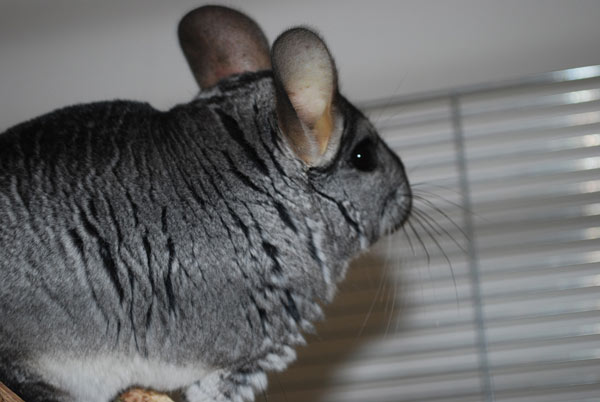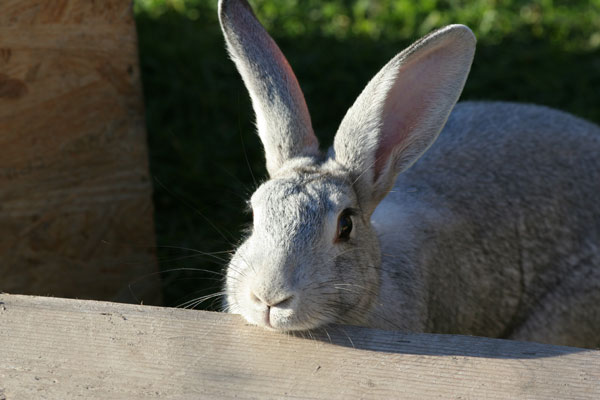Fur animals: Sense

Mink
On its nose, neck, and at the bottom of the hind legs the mink has sensory hairs that at the receptacles have an large accumulation of dendrites. The large accumulation of dendrites make these hairs extremely sensitive, and with these hairs the minks can feel objects and movements.
This is especially advantageous in environments with low light, and when catching and handling prey. Experiments where the the mink’s sensory hairs on the nose had been shaved show that the time for localising objects increased and the ability to distinguish objects of different shapes decreased.
The mink has long sensory hairs on the nose. It also has sensory hairs above the eyebrows. Photo: SLU.
1. Which sense is most relevant to a situation at the farm?
The mink is lifted by its tail.
Cold
Pressure
Pain
Touch
Heat
2. Which sense is most relevant to a situation at the farm?
The lair is lacking lid and litter on a cold winter day.
Cold
Pressure
Pain
Touch
Heat
3. Which sense is most relevant to a situation at the farm?
The mink is lifted with support under its body.
Cold
Pressure
Pain
Touch
Heat
4. Which sense is most relevant to a situation at the farm?
A summer day with high humidity.
Cold
Pressure
Pain
Touch
Heat
5. Which sense is most relevant to a situation at the farm?
The mink is kept in a rating cage that is too small.
Cold
Pressure
Pain
Touch
Heat
You can read more about the importance of the animal’s feeling in the paragraph about Handling.
Remember!
- The animal’s feeling is actually composed of five different senses: Touch, pressure, heat, cold, and pain.
- When you touch the animal it should be done carefully but firmly, and without causing pain.

The chinchilla has long sensory hairs on the nose. Photo: SLU.
Chinchilla
Chinchillas have long sensory cells on the nose that have a large accumulation of dendrites. The large accumulation of dendrites make these hairs extremely sensitive, and with these hairs the minks can feel objects and movements.
This is especially advantageous in environments with low light, and when catching and handling prey. Experiments where the the mink’s sensory hairs on the nose had been shaved show that the time for localising objects increased and the ability to distinguish objects of different shapes decreased.
It can be assumed that chinchillas should experience similar difficulties if their sensory hairs would be removed.
1. Which sense is most relevant to a situation at the farm?
The chinchilla is lifted by its tail.
Cold
Pressure
Pain
Touch
Heat
2. Which sense is most relevant to a situation at the farm?
Someone forgets to close a window on a cold winter day.
Cold
Pressure
Pain
Touch
Heat
3. Which sense is most relevant to a situation at the farm?
4. Which sense is most relevant to a situation at the farm?
A summer day with high humidity.
Cold
Pressure
Pain
Touch
Heat
5. Which sense is most relevant to a situation at the farm?
The chinchilla is being hold in a firm grip.
Cold
Pressure
Pain
Touch
Heat
You can read more about the importance of the animal’s feeling in the paragraph about Handling.
Remember!
- The animal’s feeling is actually composed of five different senses: Touch, pressure, heat, cold, and pain.
- When you touch the animal it should be done carefully but firmly, and without causing pain.

Rabbit
The rabbit has sensory cells all over the body that detect tactile stimuli. The whiskers are especially important. They are found on the rabbit’s head anad are about as long as the rabbit is wide.
The whiskers are used for food search and for orientation in the dark, for example in paths and tunnels under the ground.
Rabbits have whiskers on the head. They are important for the rabbits’ feeling and are about as long as the rabbit is wide.
Photo: Helena Forslund.